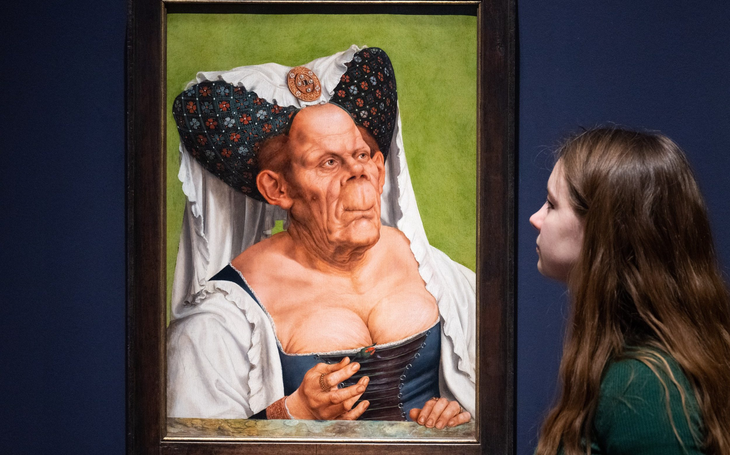The iconic work of the Flemish artist Quinten Massys which is popularly known as “The Ugly Duchess” and that inspired the character of the duchess in the children’s classic “Alice in Wonderland” is part of an exhibition recently inaugurated at the National Gallery of London that seeks to reflect on the representation of women from the Renaissance to the present.
With her ovoid face pierced by wrinkles and an uneven distribution of proportions that defies the aesthetic searches of the Renaissance period in which the work was conceived, the portrait of the Duchess is on display until June 11 in the famous London exhibition hall as an opportunity to rediscuss the notions of beauty in times when art and culture try to emancipate themselves from the hegemonic stories that the collections of museums and exhibition halls traced.
titled “The Ugly Duchess: Beauty and Satire in the Renaissance”the exhibition focuses on Renaissance perceptions that, through paintings, encouraged stereotypes of hideous, older and unpleasant women that persist today, precisely to show that the obsession with beauty is not an exclusively contemporary mandate.
The ugly duchess – deliberately painted in that way by the artist – stands out due to her “age, appearance and behavior, which are remarkably different from other women represented in the collection”, highlights the English press Gabriele Finaldigallery director.
The National Gallery reports that her exaggerated facial features, devilish headdress, low-cut dress and wrinkled chest were used by Massys to parody the traditional wedding portrait: she is of an old woman acting like a “maiden” offering her partner – that she is dressed more formally and soberly- “an unrequited display of her love”.
image.png
“This kind of works make palpable the changes that were taking place in society, especially in its consideration of women. Women who, having been adored in the Middle Ages, now become clearly more mundane creatures, without neglecting other considerations higher than those of the donna angelicata”, they explain from the curatorial text of the famous art gallery.
“Massys was one of the first to promote this satirical way of representation, a style that he showed in a whole selection of works. These new representations were satirized and demonized in the Renaissance,” they indicate.
Wrinkled, jowled, and far from attractive, “An Old Woman,” as the painting’s original title is, is one of the National Gallery’s most outstanding paintings. It is known as “The Ugly Duchess.” after it became the inspiration for the drawing he made Sir John Tenniel of the infamous duchess in “Alice in Wonderland”the famous work of lewis carroll.
Some attributed her ugliness by conventional beauty canons to the rare Paget’s disease, which causes bone hypertrophy. For the director of the National Gallery, “what is attempted in the exhibition is to go a little beyond the topic of the ‘ugly duchess’ and examine concepts of beauty and ugliness in the Renaissance.”
Five centuries after Massys completed his painting and 150 years after Tenniel’s interpretation of Carroll’s work, new perspectives conjecture that the “portrait” would not be an old woman or a duchess but a transvestite man.
“Yes, most likely it is a man,” said the curator of the sample, Emma Capronone of the world’s leading experts on Renaissance art to The Guardian newspaper.
For some researchers, the figure’s face is similar to that of a man, as are the broad, sloping shoulders, although it also has prominent breasts and feminine clothing. “The breasts, with their cheeky, outrageous cleavage, are a Massys fantasy,” Capron said.
The painter was also drawn to the extraordinary and the “misfits”, making satirical points in some of his work, including altarpieces. “And yes, I agree that An Old Woman’s face resembles that of a man”coincided
Koen Bulckens of the Antwerp Museum of Fine Arts, where the Flemish artist was based for much of his career.
The exhibition, which will run until mid-June, will include other works that question attitudes towards sexuality and the representation of women in late 15th and early 16th century European art. They include the fearsome witch riding backwards on a goat by Albrecht Dürer and various works by Leonardo Da Vinci and his followers.
“The images, sometimes grotesque, sometimes just fanciful and satirical, are partly metaphors for the social disorder of the time,” Capron said. “And they’re also artists just having fun.”
Source: Ambito
I am an author and journalist who has worked in the entertainment industry for over a decade. I currently work as a news editor at a major news website, and my focus is on covering the latest trends in entertainment. I also write occasional pieces for other outlets, and have authored two books about the entertainment industry.




